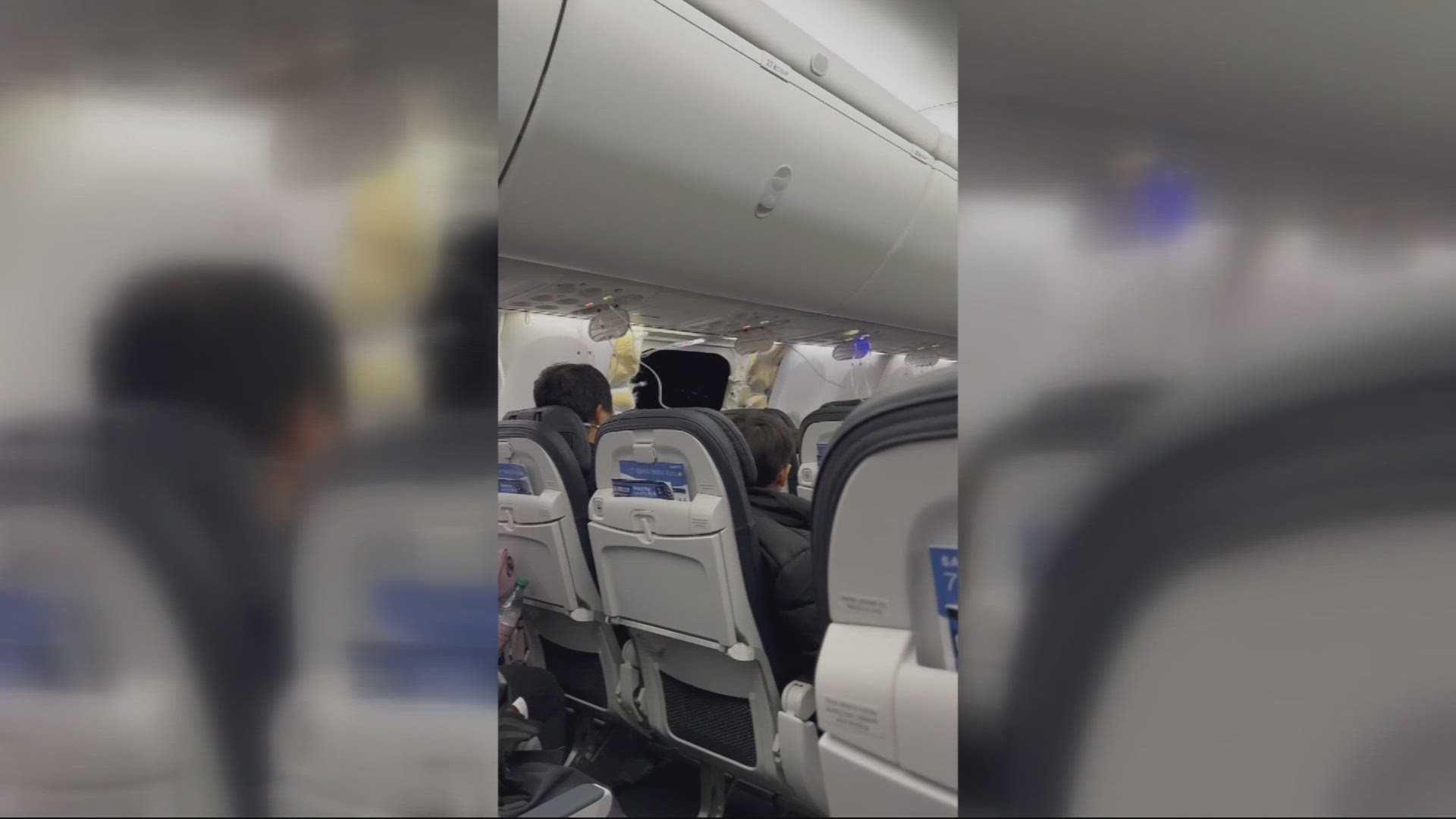PORTLAND, Ore. — More passengers aboard the Alaska Airlines flight that lost a panel at 16,000 feet are joining previously filed lawsuit against the airline and Boeing. The plane was forced to make an emergency landing at the Portland International Airport (PDX) on Jan. 5.
The original suit was filed in King County Superior Court by attorney Mark Lindquist, alleging that Boeing and Alaska Airlines were both negligent in the lead-up to the incident, which the passengers say resulted in physical pain, intense fear, distress, anxiety and trauma.
New allegations include a claim that passengers heard "a whistling sound coming from the vicinity of the door plug on a previous flight of the subject plane," according to a press release from Lindquist's firm. "Passengers apparently noticed the whistling sound and brought it to the attention of flight attendants who reportedly informed the pilot or first officer.”
But "no known further action was taken" after the cockpit's instruments "purportedly read normal," the attorney said.
The lawsuit also cited a recent National Transportation Safety Board (NTSB) preliminary report, which found the cockpit door was designed to blow out in a depressurization situation and that the pilots and crew members were not informed of that.
The report, released Tuesday, said that the depressurization incident was caused by a panel, a Mid Exit Door (MED) plug, that blew off of the side of the Boeing 737 MAX 9 twinjet. The report stated that a key set of four anchoring bolts were likely missing at the time of the accident, and the error appears to have occurred when the plane was in Boeing's Renton, Washington, manufacturing facility last summer.
The aircraft was almost brand new, the NTSB report said; it was delivered to Alaska in late October and put into service in November. It had accumulated 510 hours of flight time and completed 154 pressurization cycles at the time of the accident, according to the NTSB report. One pressurization cycle normally happens during one takeoff and landing, the equivalent of one flight.
“This plane was a ticking bomb,” the attorney's statement said. “A blowout could have happened at a cruising altitude where it would have been catastrophic.”
The lawsuit argues that "the resulting shock, noise and communication difficulties contributed to a lack of proper communication between the flight crew and passengers, thereby intensifying confusion and stress.” It also argues that both Alaska Airlines and Boeing neglected a duty of care to passengers in allowing the aircraft to go forward, adding that it was "blind luck" that no one died, as no one was seated directly next to the door plug, and passengers were still wearing their seatbelts; the plane was also still not fully in the air.
After the flight, Alaska Airlines offered $1,500 to passengers, who were notified by email. The passengers, according to the news release, were "put off by both the amount and the lack of a personal touch."
The charges include one count of negligence each against Alaska Airlines and Boeing, as well as one count of strict product liability against Boeing under Washington’s Product Liability Act.
The 22 listed plaintiffs in the lawsuit include a couple with an infant, a mother and her 13-year-old daughter, and an unaccompanied minor.
Boeing responded to KGW regarding the lawsuit, saying, "Thank you for reaching out. We don’t have anything to add."
Meanwhile, Alaska Airlines replied, "Thanks for reaching out. We cannot comment on pending litigation."
The incident
Alaska Airlines Flight No. 1282 departed PDX for Ontario, California, on Jan. 5, and took off at 5:06 p.m., according to the NTSB report. The door plug blew out about six minutes later, while the plane was still climbing above the Portland metro area. The overhead oxygen masks deployed for the passengers, and the pilots quickly descended below 10,000 feet, then returned to PDX for an emergency landing.
Before the door plug blew out, passengers told KGW that they heard "a loud bang ... a boom," with the lawsuit noting that it was loud enough to be heard over noise-cancelling headphones and hurt their hearing. Passengers also said while oxygen masks were deployed, some didn't work properly, a statement echoed in the complaint.
Inside the noisy cockpit, the force of the depressurization, according to the NTSB report, "pushed the captain into a computer display," headphones nearly pushed off his head, and the first officer's headset was completely blown off.
Fortunately, no one was sitting in the seat closest to the door plug, but a teenager in the next seat over lost his shirt when it was pulled off him and through the opening. Several passengers' cell phones were found in the Cedar Mill area north of Beaverton in the following days, and a Portland science teacher eventually found the missing door plug in his backyard.
The incident prompted the Federal Aviation Administration (FAA) to ground all 737 MAX 9 planes nationwide. Alaska and United Airlines are the only two U.S. carriers whose fleets include the MAX 9.
The planes began returning to service on Jan. 26 after the FAA approved an inspection process to confirm the integrity of the door plugs, but the incident has sparked widespread criticism and scrutiny of Boeing in general and the 737 MAX product line in particular, especially coming just a few years after two crashes involving 737 MAX 8 jets that killed 346 people.
Other Boeing, Alaska Airlines lawsuits
Boeing is also being sued by passengers in separate lawsuit relating to the door plug blowout incident.
Alaska Airlines and its affiliate, Horizon Air, are still facing a class-action lawsuit after off-duty pilot Joseph Emerson allegedly tried to shut down the engines of a plane midflight, prompting the plane to be diverted to PDX.



